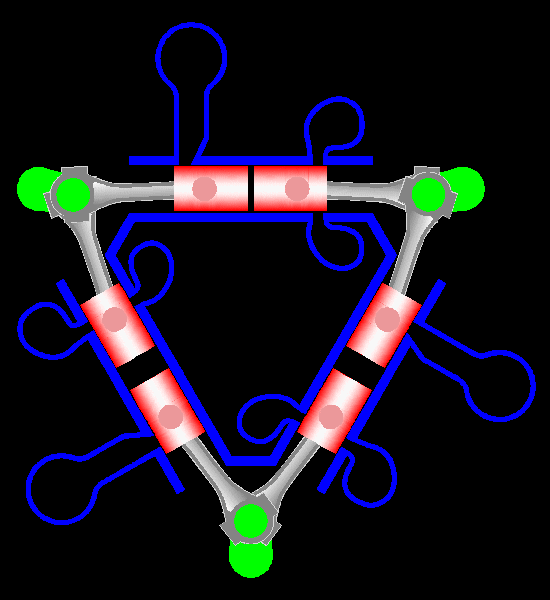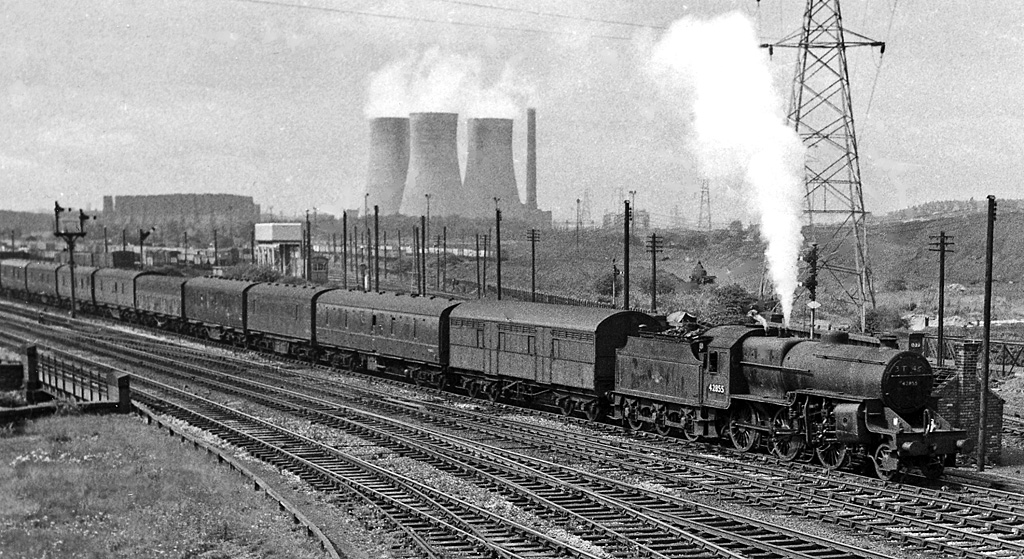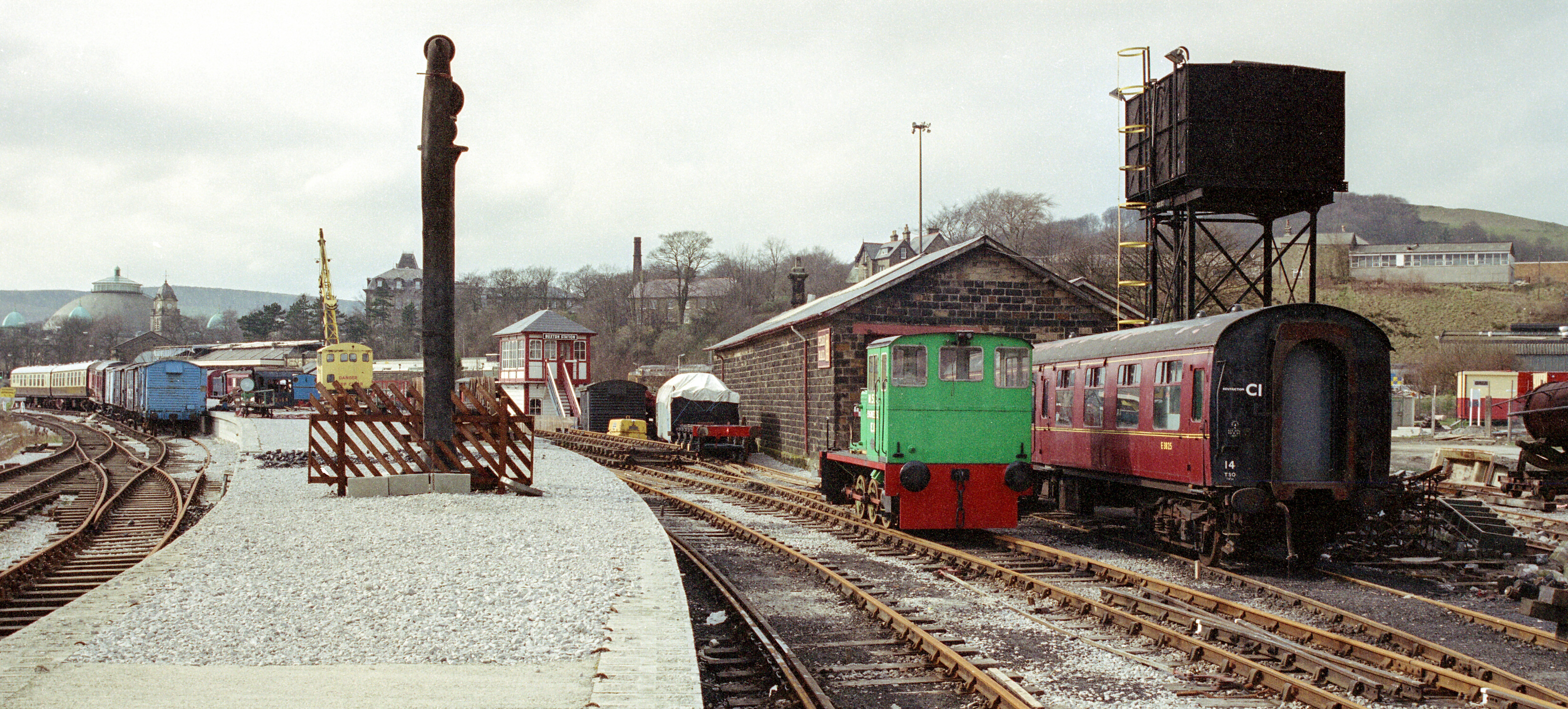|
Deltic 9000 Fund
The Deltic 9000 Fund was a locomotive preservation society set up to ensure that at least one example of the British Rail Class 55 diesel locomotives was preserved following their withdrawal from service in 1981. It was placed in receivership in 2004. Formation With the entry into service of the new High Speed Train in the late 1970s, the old Class 55 diesel locomotives began to be withdrawn. In order to ensure that the first production unit, D9000/55022 (''Royal Scots Grey''), was preserved, the Deltic 9000 Fund was established with the intention of purchasing the locomotive once it was withdrawn. The successful purchase was completed in 1983, and ''Royal Scots Grey'' was handed over to the fund at Doncaster Works, from where she was taken to the Nene Valley Railway for preservation. At the same time, D9016/55016 (''Gordon Highlander'') was also purchased by the fund. ''Gordon Highlander'' was intended to be used as a source of spares for ''Royal Scots Grey'', but, with sentime ... [...More Info...] [...Related Items...] OR: [Wikipedia] [Google] [Baidu] |
British Rail Class 55
The British Rail Class 55, also known as a Deltic, or English Electric type 5, is a class of diesel locomotive built in 1961 and 1962 by English Electric for British Railways. They were designed for the high-speed express passenger services on the East Coast Main Line (ECML) between Edinburgh and . They gained the name "Deltic" from the prototype locomotive, DP1 ''Deltic'' (the running number DP1 was never carried), which in turn was named after its Napier Deltic power units. At the time of their introduction into service, the Class 55s were the most powerful single-unit diesel locomotives in the world, with a power output of . They had an official maximum speed of , however this was frequently exceeded, especially in their later years of service, with speeds of up to , being recorded on level gradients, and up to whilst descending Stoke Bank. Twenty-two locomotives were built, which were used for express passenger services on the ECML, particularly from London to and Edinburg ... [...More Info...] [...Related Items...] OR: [Wikipedia] [Google] [Baidu] |
Napier Deltic
The Napier Deltic engine is a British opposed-piston valveless, supercharged uniflow scavenged, two-stroke diesel engine used in marine and locomotive applications, designed and produced by D. Napier & Son. Unusually, the cylinders were disposed in a three-bank triangle, with a crankshaft at each corner of the triangle. The term Deltic (meaning "in the form of the Greek letter (capital) delta") is used to refer to both the Deltic E.130 opposed-piston, high-speed diesel engine and the locomotives produced by English Electric using these engines, including its demonstrator locomotive named ''DELTIC'' and the production version for British Railways, which designated these as (TOPS) Class 55. A single, half-sized, turbocharged Deltic power unit also featured in the English Electric-built Type 2 locomotive, designated as the Class 23. Both locomotive and engine became better known as the "Baby Deltic". History and design The Deltic story began in 1943 when the British Admiral ... [...More Info...] [...Related Items...] OR: [Wikipedia] [Google] [Baidu] |
Washwood Heath
Washwood Heath is a ward in Birmingham, within the formal district of Hodge Hill, roughly two miles north-east of Birmingham city centre, England. Washwood Heath covers the areas of Birmingham that lie between Nechells, Bordesley Green, Stechford and Hodge Hill. Geography Saltley on the south-western side and Ward End on the north-eastern side of Washwood Heath are the two areas that cover the entire ward, though some parts near Nechells and Hodge Hill do not come under either of these and are simply headed under "Washwood Heath". One of the area's major employers was the railway works owned by Metropolitan-Cammell (later Alstom), but it closed in 2005. In the 2020s, Washwood Heath railway depot was to be constructed as part of the High Speed 2 project - to service and maintain the high speed trains. Demographics According to the 2001 Population Census, there were 27,822 people living in the ward with a population density of 5,335 people per km2 compared with 3,649 peo ... [...More Info...] [...Related Items...] OR: [Wikipedia] [Google] [Baidu] |
Loughborough
Loughborough ( ) is a market town in the Charnwood borough of Leicestershire, England, the seat of Charnwood Borough Council and Loughborough University. At the 2011 census the town's built-up area had a population of 59,932 , the second largest in the county after Leicester. It is close to the Nottinghamshire border and short distances from Leicester, Nottingham, East Midlands Airport and Derby. It has the world's largest bell foundry, John Taylor Bellfounders, which made bells for the Carillon War Memorial, a landmark in the Queens Park in the town, of Great Paul for St Paul's Cathedral, and for York Minster. History Medieval The earliest reference to Loughborough occurs in the Domesday Book of 1086, which calls it ''Lucteburne''. It appears as ''Lucteburga'' in a charter from the reign of Henry II, and as ''Luchteburc'' in the Pipe Rolls of 1186. The name is of Old English origin and means "Luhhede's ''burh'' or fortified place". Industrialisation The first sign of in ... [...More Info...] [...Related Items...] OR: [Wikipedia] [Google] [Baidu] |
Great Central Railway (heritage Railway)
The Great Central Railway (GCR) is a heritage railway in Leicestershire, named after the company that originally built this stretch of railway. It runs for between the town of Loughborough and a new terminus in the north of Leicester. It has period signalling, locomotives and rolling stock. The GCR is currently the only double track mainline heritage railway in the world with of working double track. Four stations are in operation, each restored to a period in the railway's commercial history: (the 1950s); Quorn & Woodhouse (Second World War and the remainder of the 1940s); (Edwardian Era); Leicester North (the 1960s). Background history In 1897, the Great Central Railway itself was formed, becoming the last steam mainline in the United Kingdom. Two years later in 1899, "The London Extension" was officially opened to passenger and freight traffic, allowing more direct journeys from the capital to Nottingham, Leicester, Sheffield and Manchester. The entire line w ... [...More Info...] [...Related Items...] OR: [Wikipedia] [Google] [Baidu] |
Direct Rail Services
Direct Rail Services (DRS) is a rail freight company in Great Britain. As of 2022, it is one of seven publicly owned railway companies in the United Kingdom, the others being NI Railways (the passenger rail operator in Northern Ireland), LNER, Northern Trains, Southeastern, Transport for Wales Rail and ScotRail. DRS was created as a wholly-owned subsidiary of British Nuclear Fuels Ltd (BNFL) during late 1994 with the primary purpose of taking over the rail-based handling of nuclear material from British Rail. As early as 1997, the company begun diversified into other operations, initially bidding for contracts to haul freight traffic for other companies such as Tesco and Eddie Stobart Group. Furthermore, DRS has branched into passenger services, these have included charters, such as the Northern Belle, and contracts with operators such as National Express East Anglia, Chiltern Railways, and Arriva Rail North. Additional rolling stock, such as the Class 57 and Class 88 locom ... [...More Info...] [...Related Items...] OR: [Wikipedia] [Google] [Baidu] |
Harry Needle Railroad Company
The Harry Needle Railroad Company (HNRC) is a railway spot-hire company, based at Barrow Hill Engine Shed in Derbyshire. Prior to 2010 the company also recovered valuable spares from scrapped railway vehicles, either on the vehicle owners site, or at the European Metal Recycling scrapyard in Kingsbury. HNRC was established in 1998. It adopted an orange livery. In 2002 it introduced a yellow, white and black livery. In 2019, HNRC purchased DB Cargo UK's Worksop depot. As at October 2019, this was being used to store withdrawn InterCity 225s and Class 345s awaiting the opening of the Elizabeth line.First LNER Mk4s taken to Worksop for storage ''Rail'' issue 880 5 June 2019 page 29 Fleet Details All locomotives below are owned or were previously owned by HNRC, unless otherwise stated. N.B. For scrapped locomotives, see below. Scrapped locomotives HNRC also operates as a scrap dealer, dismantling redundant locomotives and rolling stock, either on site, or at the scrapya ... [...More Info...] [...Related Items...] OR: [Wikipedia] [Google] [Baidu] |
Peak Rail
Peak Rail is a preserved railway in Derbyshire, England, which operates a steam and heritage diesel service for tourists and visitors to both the Peak District and the Derbyshire Dales. The preserved railway line is over 3½ miles (5.6 km) in length and, , operates train services from Matlock station (shared with Derwent Valley Line services from Derby via Ambergate) via the site of Matlock Riverside and Darley Dale to Rowsley South. Peak Rail intends to extend its operational services northward to when resources allow, extending to a total of 4¼ miles (6.8 km). Beyond Bakewell, the railway trackbed is used by the Monsal Trail. __TOC__ History First preservation attempts with the Buxton Steam Centre In 1975, the Peak Railway Preservation Society was established and opened a site at the now-closed Buxton Steam Centre with restoration facilities and a 300-yard operating line. Proposals were put forward to extend the operating line onto the single t ... [...More Info...] [...Related Items...] OR: [Wikipedia] [Google] [Baidu] |
Locomotive Services
Locomotive Services Limited is a train operating company in Great Britain. The company operates rail tours using heritage steam, diesel and electric locomotives with support from associated companies and trusts. History In August 2017, Locomotive Services Limited (LSL) was granted an operating licence by the Office of Rail & Road allowing it to operate mainline trains in the United Kingdom. Based at Crewe Diesel TMD, it is owned by Jeremy Hosking. It operated its first tour from Crewe to Kingussie in March 2018."First LS tour" ''Today's Railways UK'' issue 197 May 2018 page 68 It built up a fleet of Class 08s, 37s and 47s, mainly acquired from Direct Rail Services. In December 2017, it purchased two Class 55s: D9000 and D9016.""Deltics sold – and could be put to work on new railtours" ''Rail'' issue 842 20 December 2017 page 30 The former is being restored at Locomotive Services' Crewe depot, whilst the latter has been cosmetically restored and transferred to the company ... [...More Info...] [...Related Items...] OR: [Wikipedia] [Google] [Baidu] |
Kyle Of Lochalsh Railway Station
, symbol_location = gb , symbol = rail , image = Kyle of Lochalsh.jpg , caption = 158704 standing at Kyle of Lochalsh, with the Isle of Skye visible in the distance , borough = Kyle of Lochalsh, Highland , country = Scotland , coordinates = , grid_name = Grid reference , grid_position = , manager = ScotRail , platforms = 2 , code = KYL , original = Highland Railway , pregroup = Highland Railway , postgroup = LMS , years = 2 November 1897 , events = OpenedButt (1995), p. 137 , mpassengers = , footnotes = Passenger statistics from the Office of Rail and Road , embedded = Kyle of Lochalsh railway station is the terminus of the Kyle of Lochalsh Line in the village of Kyle of Lochalsh in the Highlands, northern Scotland. The station is from . ScotRail, who manage the station, operate all of the services here. History The station was opened on 2 November 1897 by the Highland Railway, following the completion of the extension of the Dingwall and Sky ... [...More Info...] [...Related Items...] OR: [Wikipedia] [Google] [Baidu] |
Mallaig Railway Station
, symbol_location = gb , symbol = rail , image = Mallaig railway station from The Jacobite 02.jpg , borough = Main Street, Mallaig, Highland , country = Scotland , coordinates = , grid_name = Grid reference , grid_position = , manager = ScotRail , platforms = 2 , code = MLG , original = Mallaig Extension Railway of West Highland Railway , pregroup = North British Railway , postgroup = LNER , years = 1 April 1901 , events = Station openedButt (1995) , mpassengers = , footnotes = Passenger statistics from the Office of Rail and Road , embedded = Mallaig railway station is a railway station serving the ferry port of Mallaig, Lochaber, in the Highland region of Scotland. This station is a terminus on the West Highland Line, by rail from and from Glasgow Queen Street. The station building is Category C listed. ScotRail, who m ... [...More Info...] [...Related Items...] OR: [Wikipedia] [Google] [Baidu] |
Royal Scotsman
The ''Belmond Royal Scotsman'' is a Scottish overnight luxury train, started in 1985 by GS&WR (Great Scottish and Western Railway Co.), and run since 2005 by Belmond Ltd. Its itineraries include 2, 3, 4, 5 or 7-night journeys around the Scottish Highlands, visiting castles, distilleries and historic sites. Once each year, it also makes a 7-night journey around the whole of Great Britain. Train's history The first train was composed of Mark 1 sleeping cars and three vintage dining and lounge carriages. After the inauguration of the current train set in 1989, the vintage coaches have kept on running as the '' Queen of Scots'' charter train. For the second train batch the train's former owner acquired Pullman cars, which were built in 1960 by Metropolitan Cammell for the East Coast Main Line. This train consisted of four sleeping cars, two dining cars, and one observation car''.'' The train's two dining cars have been replaced over the years. Dining Car 1, which used to b ... [...More Info...] [...Related Items...] OR: [Wikipedia] [Google] [Baidu] |








.jpg)

.jpg)